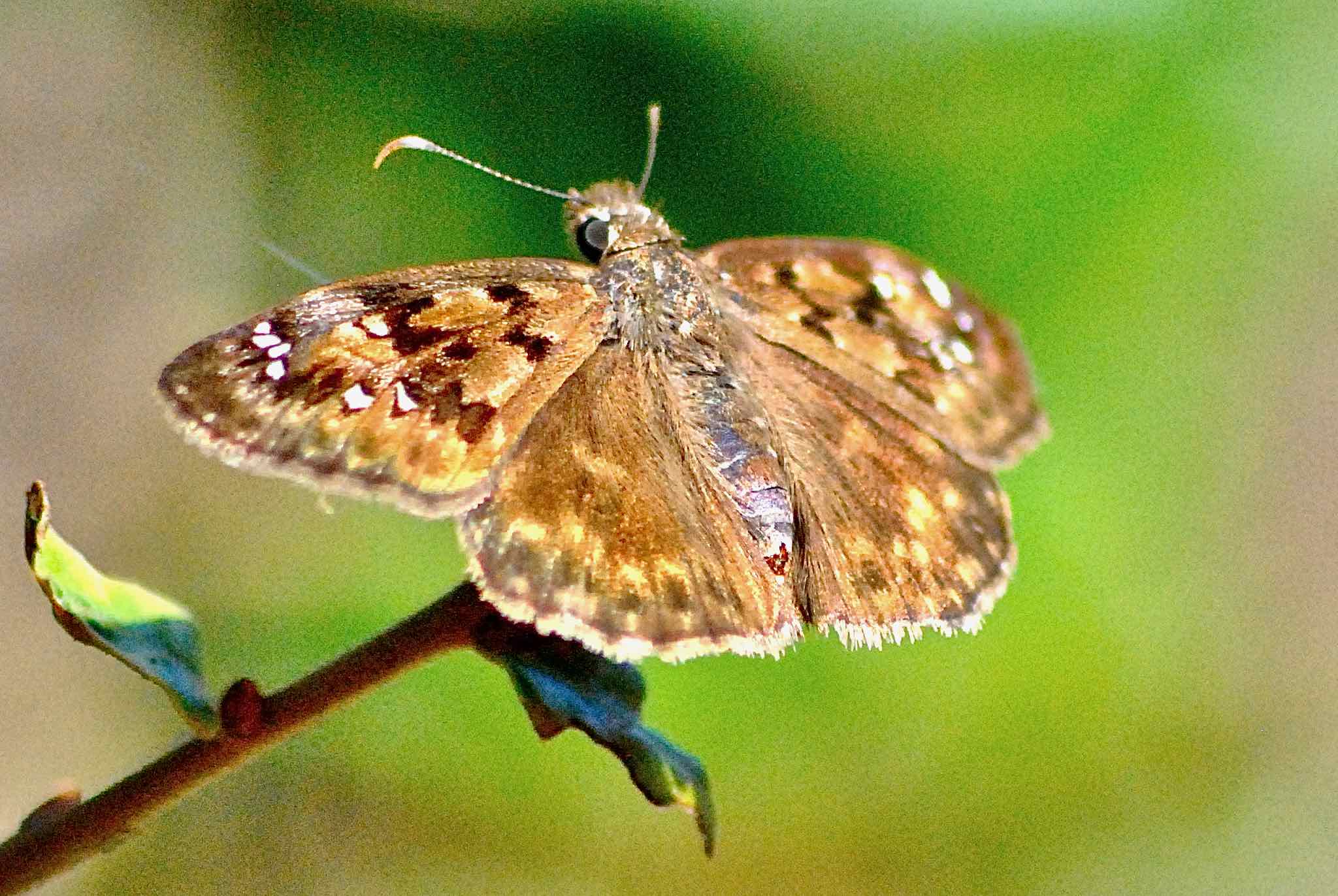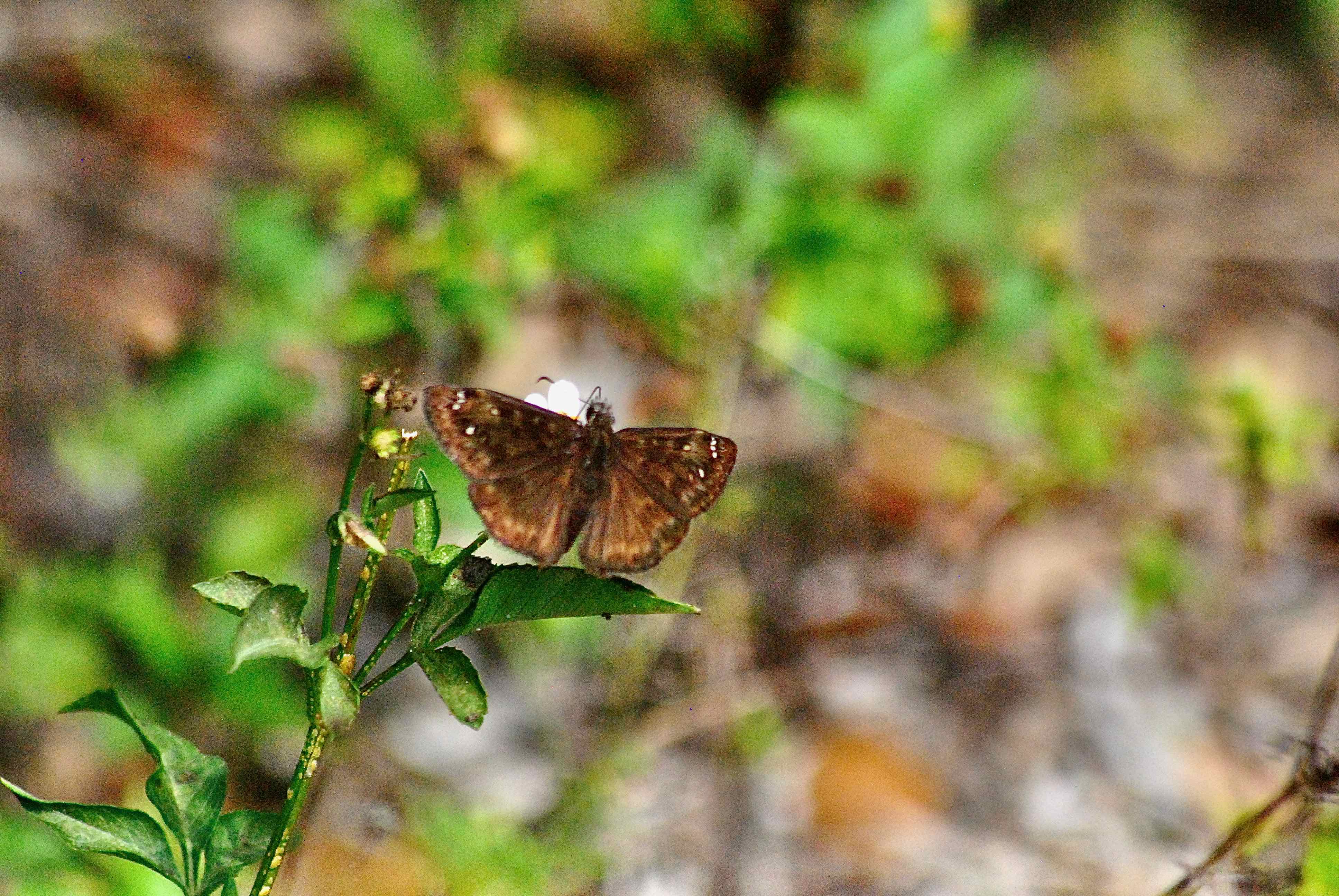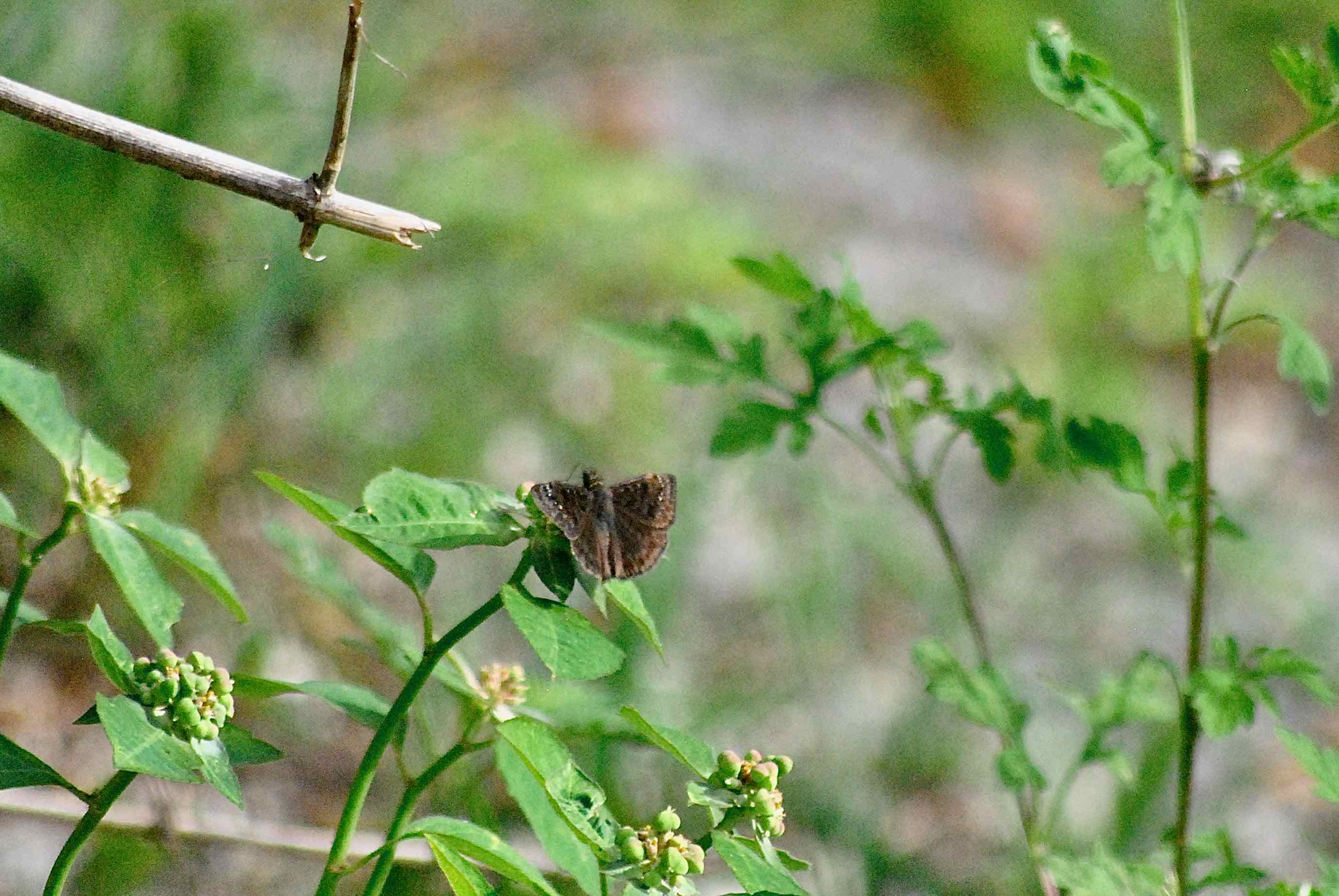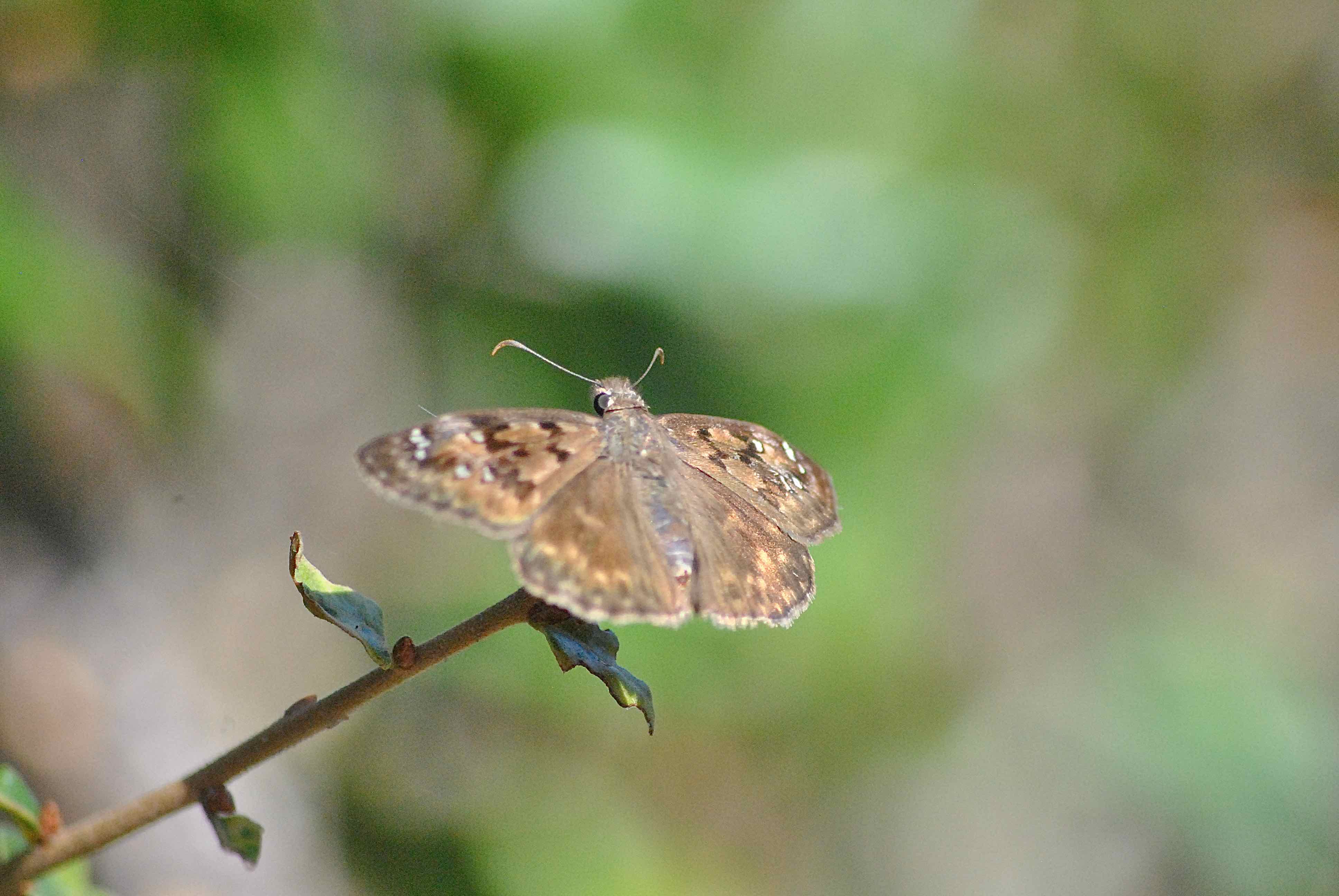
Horace's duskywing, photographed at Seacrest Scrub Natural Area, Boynton Beach, Palm Beach County, September 2013.
Horace's duskywing, Erynnis horatius, is a skipper with a difference. Like most skippers, it has overly large eyes for a butterfly. And like most skippers, it lacks flashy colors. In fact, it defines drab.
But unlike most skippers, it perches with its wings open (as seen in the photographs) rather than folded up. The drab colors and the open wings are a couple of quick keys to identifying this guy.
Horace's duskywing is medium in size, as butterflies go, with a wingspan that can exceed two inches. It is brown, with a series of glassy spots in the upper corners of the forewings. Females are more mottled than the males.
This butterfly can be found throughout most of the eastern United States to Massachusetts and Vermont, through the Midwest to the Dakotas, southward to Texas and Florida. There's also a population in the Four Corners area of Colorado, New Mexico, Arizona and Utah.
In the northern portions of its range, Horace's duskywing produces two generations between April and September. In the deep South, the breeding season extends from March to December. Caterpillars born in the fall hibernate through winter.
Oaks, including live and scrub, serve as host plants for Horace's duskywing young. Females lay single eggs on the leaves of the hosts, usually new growth; the caterpillars eat the leaves and also make a shelter on them, another skipper trademark. Males, on the other hand, perch low to the ground, waiting for the ladies of the species to pass by. Males also gather at puddles.
Open woodlands and clearings are preferred habitats for Horace's duskywing. Like all skippers, Horace's duskywings have a rapid flying style, darting from flower to flower.
Favorite sources of nectar for adults include dogbane, boneset (members of the genus Eupatorium) button bush, golden rod and peppermint.
In Florida, Horace's duskywings are found throughout the state, from Escambia County in the western corner of the Panhandle, to Nassau County north of Jacksonville, south to Monroe County. They are active year-round.
So who is Horace that inspired the name? An entomologist named Samuel Hubbard Scudder and fellow Bostonian Edward Burgess described and named it Horace's duskywing in 1870. Scudder, who was considered among the greatest American naturalists of his era, had an equally accomplished younger brother, Horace Elisha Scudder, who wrote children's stories and later became editor of the Atlantic Monthly. Perhaps a clue, but we could not find a defnitive answer.
Horace's duskywing is a member of Hesperidae, the skipper family.



